Deir el-Medina
Valley of the Artisans
When people think of Luxor’s West Bank, they often picture the Valley of the Kings or the impressive temples of pharaohs. However, there is a hidden site that tells a more personal story: Deir el-Medina. This was the village where the workers who built Egypt’s famous tombs lived. Known in ancient times as Set-Maat—“The Place of Truth”—this site offers a rare glimpse into the daily lives of ordinary Egyptians who created remarkable legacies.
Unlike the large temples meant to impress, Deir el-Medina focuses on the people: their homes, work, families, and even their problems. Visiting its ruins today means stepping into the heart of a community that thrived over 3,000 years ago.
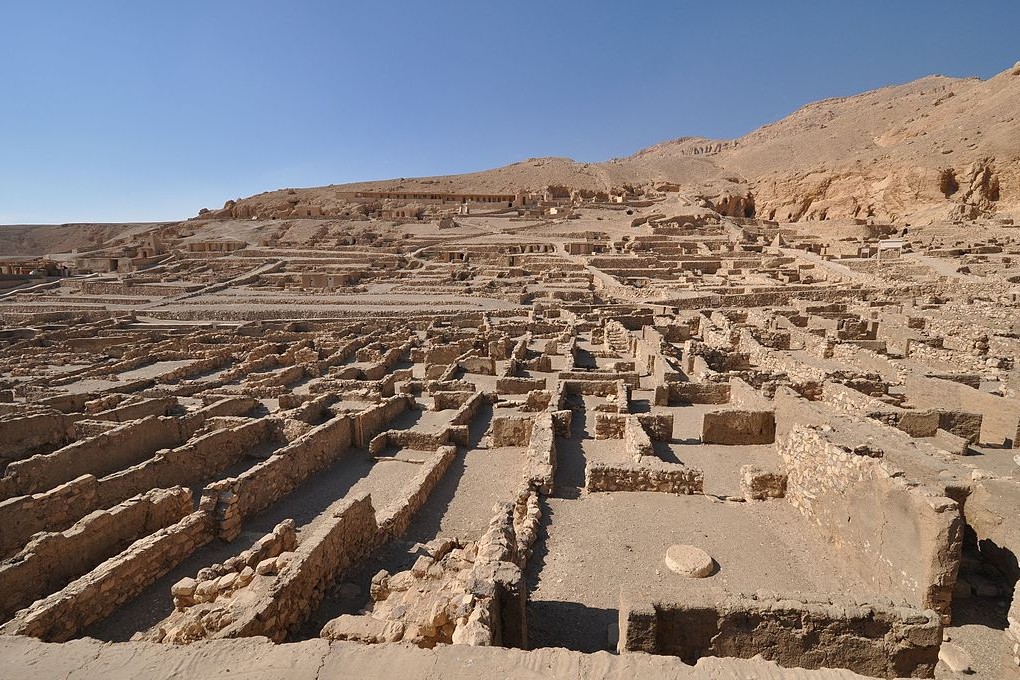
Where is Deir el-Medina?
Deir el-Medina is located on the West Bank of Luxor, just a short drive from the Valley of the Kings and the Valley of the Queens. It is often overlooked by visitors, which makes it a great place to explore a quieter part of ancient Egypt.
Reaching Deir el-Medina is straightforward; it takes approximately 20 to 30 minutes by car or taxi from Luxor city. Many travelers visit it along with nearby sites, such as Medinet Habu, the Ramesseum, or the Colossi of Memnon. Because it is less crowded, Deir el-Medina offers a peaceful experience, allowing you to explore the ruins without the distraction of large tour groups.
Luxor Tours & Activities
Looking to save some costs on your travel? Why not join a shared group tour to explore Luxor, Egypt? Here are some activities you might be interested in:
The Location of Deir el-Medina
History of Deir el-Medina: The Place of Truth
The village was established during the 18th Dynasty, around the time of Pharaoh Amenhotep I. It was created to house the craftsmen, painters, stonemasons, and scribes who built and decorated the royal tombs in the Valley of the Kings.
This community thrived for nearly 500 years. The artisans were skilled workers, not slaves, and they often passed their skills down to their children. They lived with their families in simple but organized homes, forming a close community that was both isolated and privileged.
By the end of the 20th Dynasty, political problems and economic decline led to the village’s abandonment. Nonetheless, the records, tombs, and ruins left behind offer a unique view of life in New Kingdom Egypt.
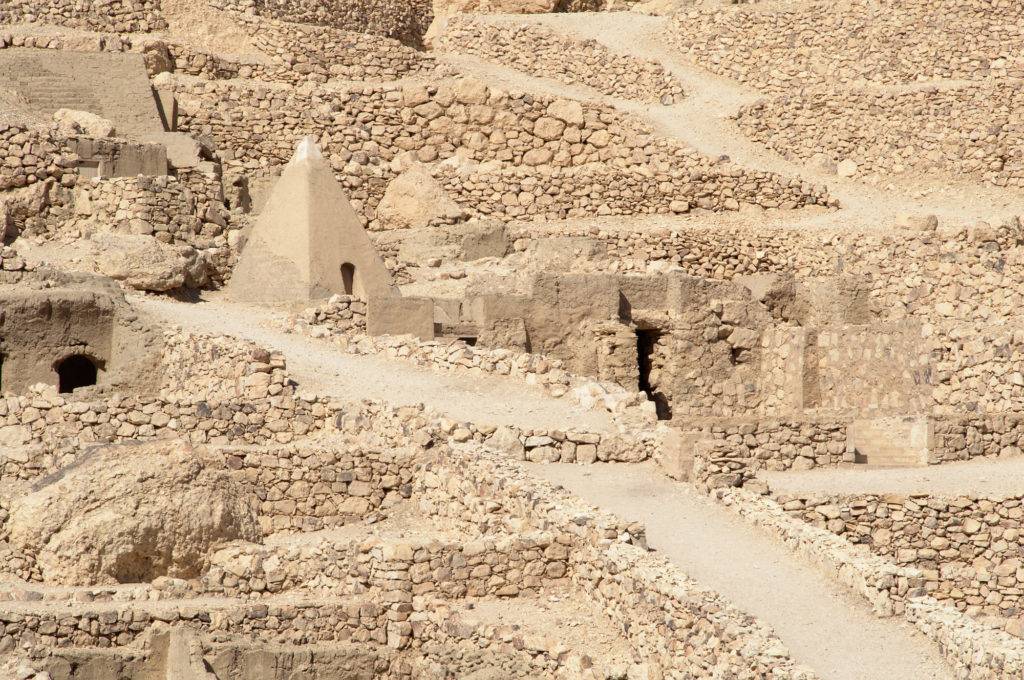
Life in the Village: Daily Routines and Records
Deir el-Medina is special because of the many written items found there. Thousands of limestone flakes (called ostraca) and papyrus papers show details of daily life that we don’t see elsewhere in Egypt.
From these records, we learn that:
– Workers organized into teams: Artisans worked in shifts to carefully carve and paint the tombs of pharaohs.
– Pay came in the form of rations: Workers received grain, beer, and other essentials as payment.
– Family life was important: Houses were small but useful, with living areas, kitchens, and shrines for household gods.
– Religion was part of daily life: Villagers built chapels for Hathor and other gods, mixing personal worship with state work.
– They held the first recorded labor strike: When rations were delayed during Ramesses III’s reign, workers stopped working and protested, showing a modern act of defiance.
The combination of these archaeological finds and written records makes Deir el-Medina one of the best-documented ancient communities.
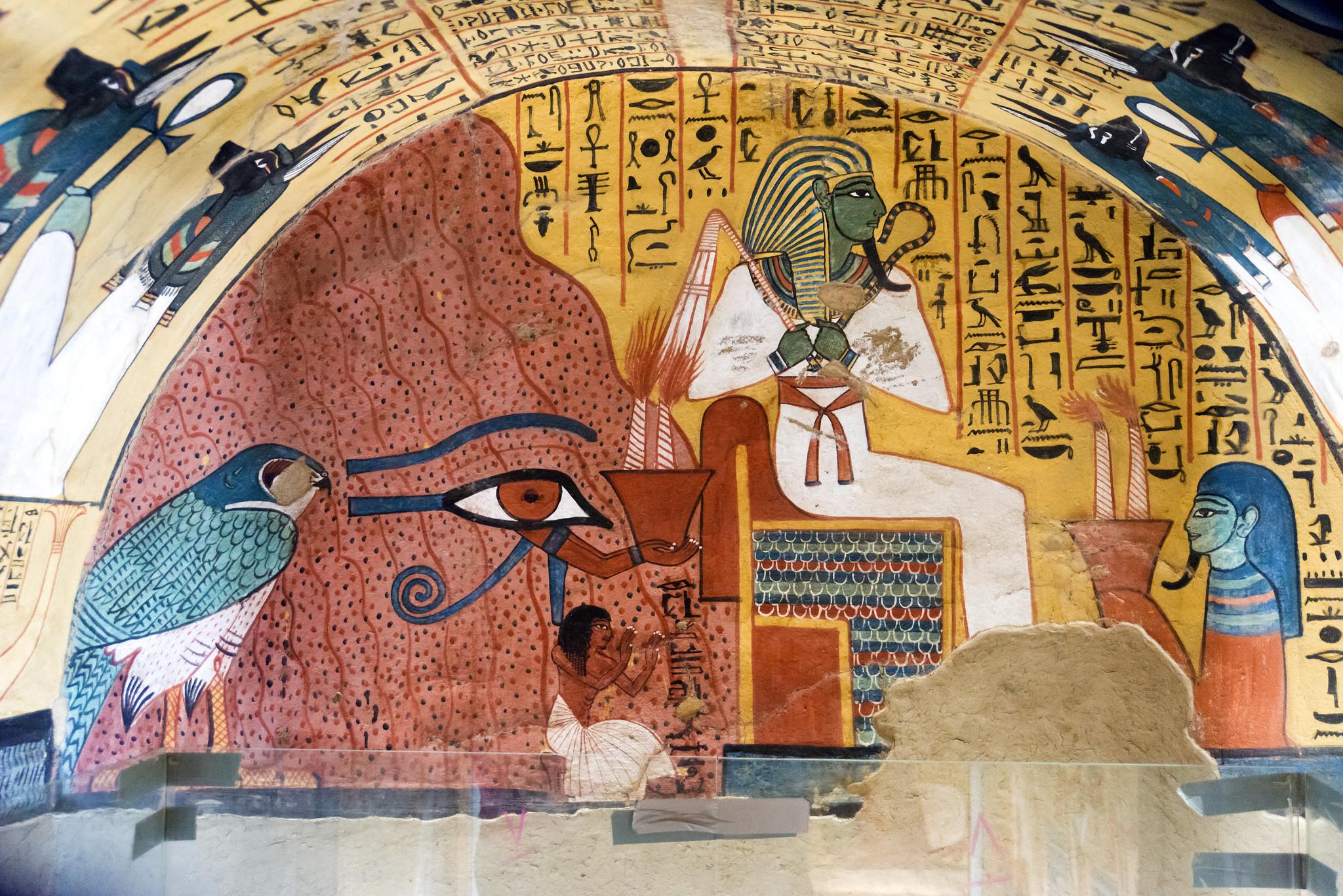
The Tombs of Deir el-Medina: Artistry Beyond the Pharaohs
The artisans who created royal tombs also built tombs for themselves and their families. These private tombs are among the most beautiful and well-preserved in Egypt, standing in contrast to the grand royal burials.
Some highlights include:
– The Tomb of Sennedjem (TT1): Known for its colorful scenes of the afterlife, showing Sennedjem and his wife in lush fields forever.
– The Tomb of Inherkhau (TT359): Decorated with images of gods and protective spells.
– The Tomb of Pashedu (TT3): Features close family scenes and impressive artistry.
Unlike royal tombs, these private tombs are bright, personal, and filled with life. They show artisans with their families, having banquets, or worshipping gods in relatable ways.
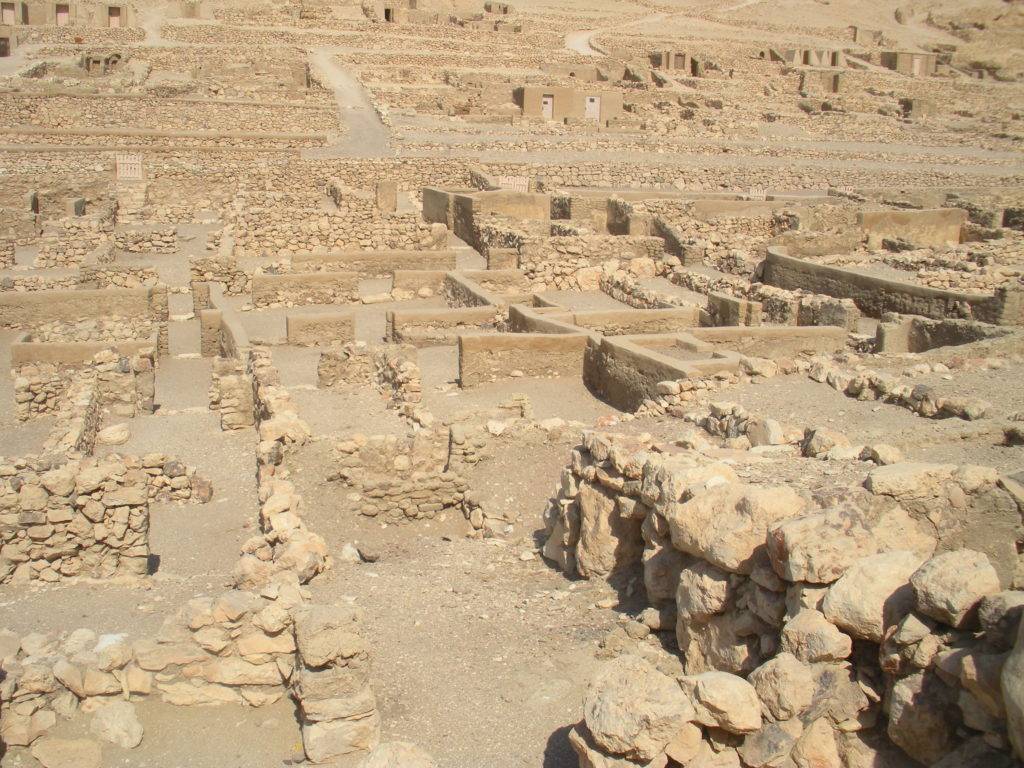
Archaeological Significance: A Window into Ancient Society
Most of what we know about ancient Egypt comes from its temples, royal tombs, and large monuments. Deir el-Medina is different. It gives us a rare look at regular Egyptians—those who were not pharaohs or priests but still helped shape Egypt’s history.
Archaeologists have found:
– Legal documents about disputes, marriages, and inheritance.
– Religious texts that show personal beliefs and magical practices.
– Economic records that explain how rations were shared and how shortages caused problems.
This makes Deir el-Medina important not just for studying Egypt, but also for understanding human history. It shows that history is not only written by kings but also by the communities that built their monuments.

Visiting Deir el-Medina Today: Practical Travel Guide
For modern travelers, Deir el-Medina is both accessible and rewarding. Here’s what you need to know:
- Opening Hours: Typically 6:00 AM – 5:00 PM (varies seasonally).
- Tickets: 200 EGP at Luxor ticket offices.
- Best Time to Visit: Early morning or late afternoon to avoid the midday heat.
- Duration: Allow 1–2 hours to explore the village ruins and tombs.
- Getting There: Hire a taxi, private driver, or join a guided tour. Public transport is limited.
- Tips: Bring water, wear a hat, and don’t rush—this is a site best savored slowly.
Many visitors combine Deir el-Medina with Medinet Habu (the mortuary temple of Ramesses III) and the Valley of the Queens for a well-rounded West Bank itinerary.
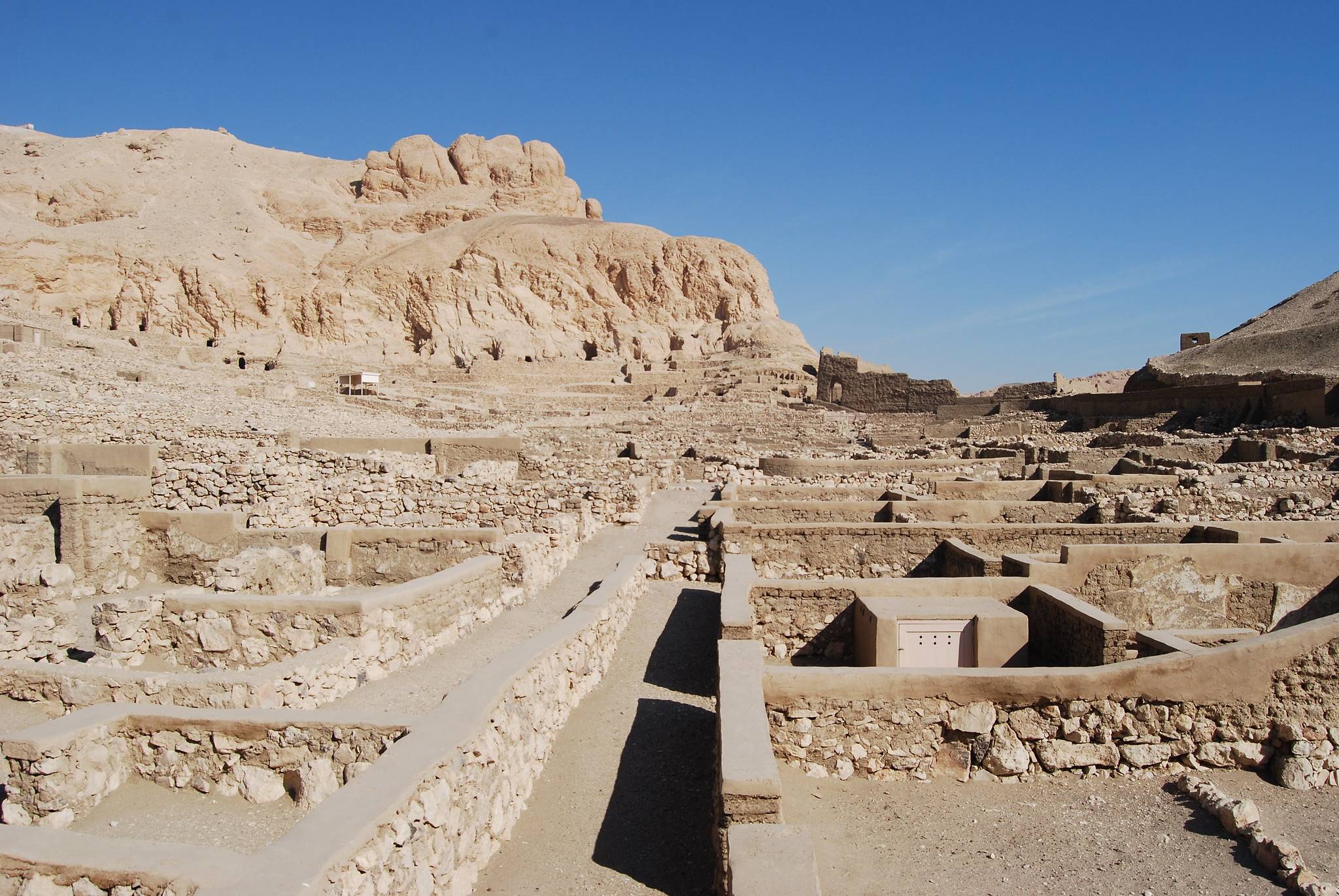
Why You Shouldn’t Miss Deir el-Medina
Deir el-Medina may not have the tall columns of Karnak or the golden treasures of Tutankhamun, but it offers something special: a personal link to the past. Here, you can walk the same narrow streets where artisans once rushed to work, stand inside the tombs they painted for themselves, and read their records of joy and struggle.
This site reminds us that behind every pharaoh’s tomb was a community of skilled workers whose art still impresses the world today. For travelers who want a deeper and more authentic experience of ancient Egypt, Deir el-Medina is a must-see.
Got a Question?
F.A.Qs
Absolutely. It’s one of the few places in Egypt where you can experience the daily life of ordinary people, not just the grandeur of kings.
Plan for at least 1–2 hours, especially if you want to explore multiple tombs.
While the Valley of the Kings showcases royal tombs, Deir el-Medina reveals the lives and tombs of the artisans who built them. It’s more intimate, colorful, and personal.
200 EGP
More than 5,000 ostraca were uncovered, and their translation indicated that they were the documentary and literary archives of the Ramesside community of artisans who lived at Deir el-Medina.
Did you know that
By purchasing through our links, you support us at no additional cost.
Thank you for your support. ♥️
